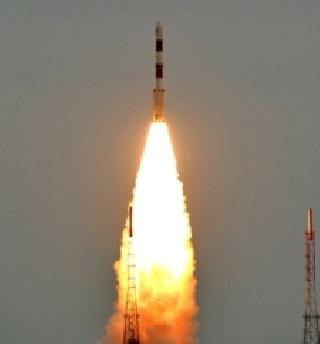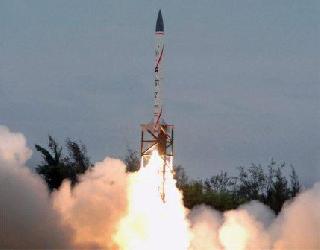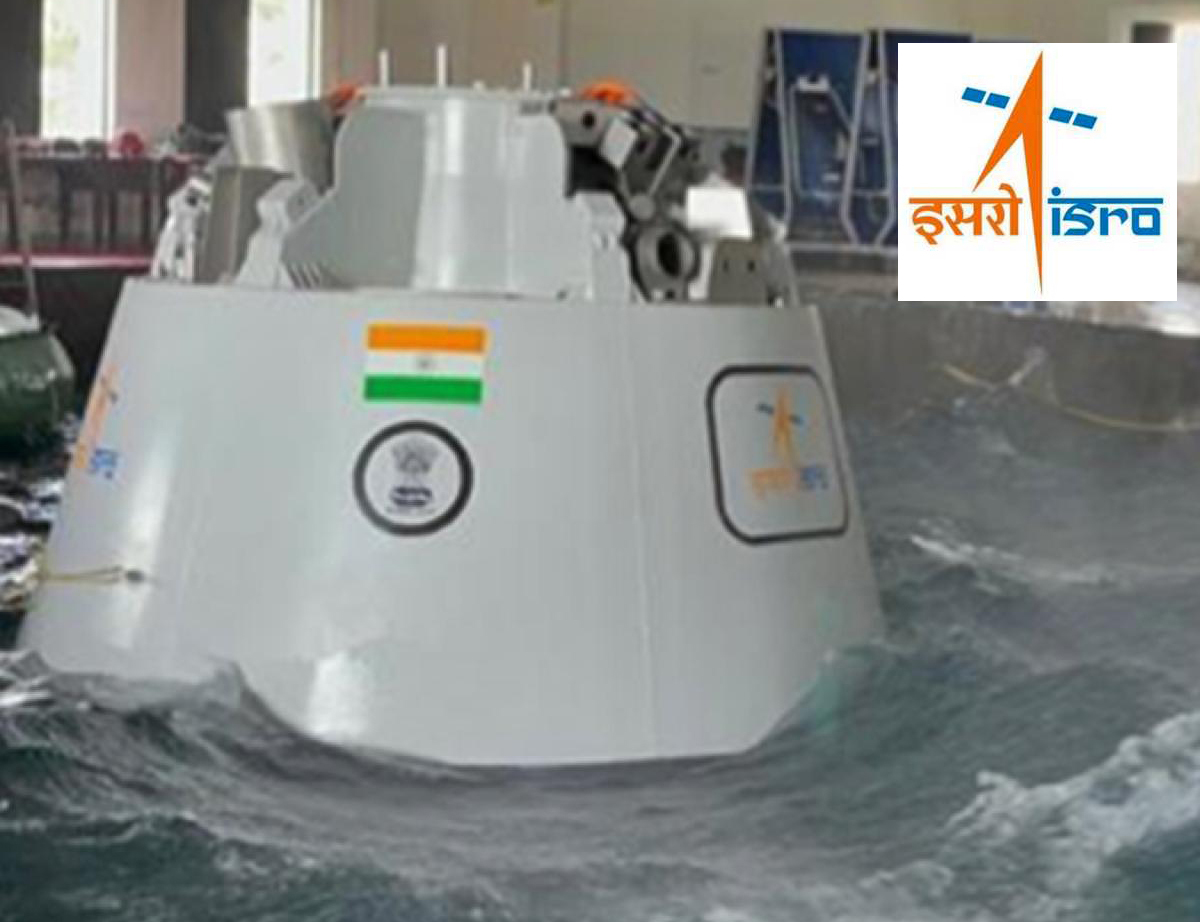
PSLV-C17 lifts off from from Sriharikota spaceport. An ISRO photo
By Ritu Mousumi Tripathy
The Polar Satellite Launch Vehicle (PSLV) of ISRO has remained India’s most reliable and unassailable “workhorse” in carrying out space missions for nearly two decades.
The recent successful launch of GSAT-12 communication satellite by the PSLV-C17 rocket has not only reestablished the space agency’s reliability on the indigenously-built launch vehicle, but also added another feat to the glorious list of PSLV rocket variants – the powerful PSLV-XL configuration.
The advanced PSLV-XL model has proved its worth for the second time in three years during last week’s launch.
The new powerful launch vehicle variant that placed the Chandrayaan-1 – India’s first mission to Moon – into geostationary transfer orbit (GTO) in October 2008, has once again successfully inserted the 1,410 kg GSAT-12 into an orbit 284 km perigee (closest point to Earth) and 21,000 km apogee (farthest point to Earth) on July 15.
ISRO’s indigenously-built Polar Satellite Launch Vehicle’s list boasts of three models – PSLV standard, PSLV CA (core alone) and PSLV-XL. The PSLV-XL is an advanced version of the rocket with more power and payload carrying capability.
While the PSLV standard configuration has a lift off capability of 1,678 kg to place 622 km into the sun synchronous Low Earth Orbit (LEO) and the PSLV CA variant has the capability to place satellites up to 1,100 kg into the same orbit, the PSLV-XL, on the other hand, has a payload capability of 1800 kg that can be injected into the geostationary transfer orbit which is a highly elliptical Earth orbit.
The PSLV-XL also uses more power as compared to the original PSLV rocket. While the 295-ton standard PSLV rocket configuration uses nine tonnes of solid propellant in four strap-on motors, the PSLV-XL model uses 12 tonnes of solid fuel on its six extended solid strap-on motors called PSOM-XL.
The advanced rocket, with a 320 tonnes lift-off mass, uses the larger strap-on motors to achieve higher payload capability.
The recent GSAT-12 launch is the third successful PSLV mission of placing a satellite into the GTO in which the PSLV-XL configuration has been used for the second time after the Chandrayaan-1 Moon mission launched by PSLV-C11.
ISRO, which used the standard PSLV rockets to launch India’s remote sensing satellites into the polar sun-synchronous orbits at a height of 600 km to 800 km above Earth, achieved a major breakthrough in 2002 by putting a communication satellite into geostationary transfer orbit (GTO) having a height of 36,500 km above the Earth.
A modified PSLV-C4 rocket had successfully injected India’s Kalpana-1 communication satellite into an orbit 250 km perigee (nearest point to Earth) and 36,000 km apogee (farthest point to Earth).
At a time when ISRO’s ambitious goal to develop an indigenous Geosynchronous Satellite Launch Vehicle (GSLV) to launch heavier geostationary satellites appears to be delayed following two unsuccessful launch attempts in 2010, the new PSLV-XL offers quite a reliable option to launch such satellites into the geostationary orbit in near future.
Hence, the space agency has lined up some more PSLV-XL launches in the coming months.
The new power vehicle is scheduled to launch some key satellites, including the imaging satellite RISAT-1, nano satellite Jugnu and India’s first dedicated astronomy satellite, Astrosat, into space.
The success of these forthcoming missions will provide an alternative solution to launch geostationary satellites till India succeeds in its own GSLV programme.
 Previous Article
Previous Article Next Article
Next Article












The Indian Air Force, in its flight trials evaluation report submitted before the Defence Ministry l..
view articleAn insight into the Medium Multi-Role Combat Aircraft competition...
view articleSky enthusiasts can now spot the International Space Station (ISS) commanded by Indian-American astr..
view article